Paul,
Thanks for your reply. I will try to be as brief as possible.
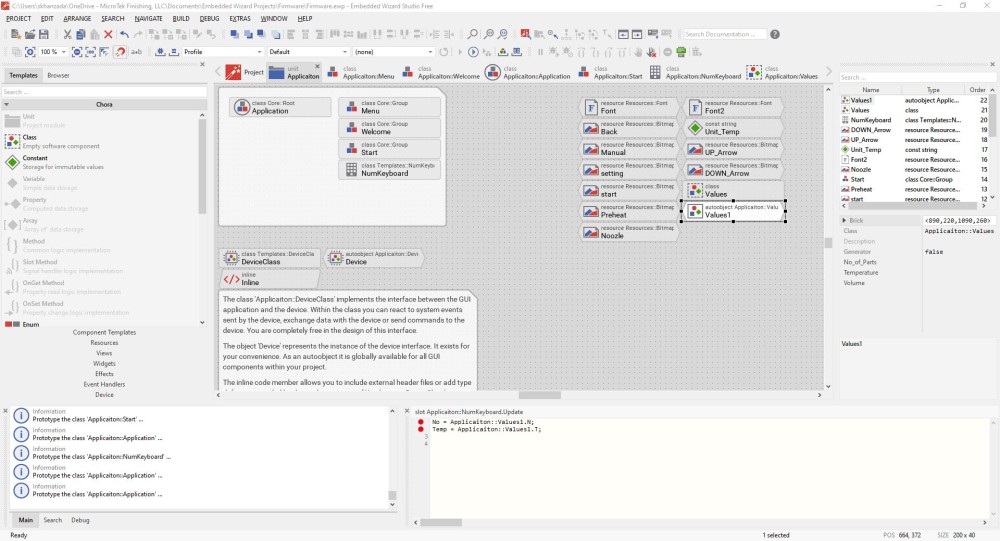
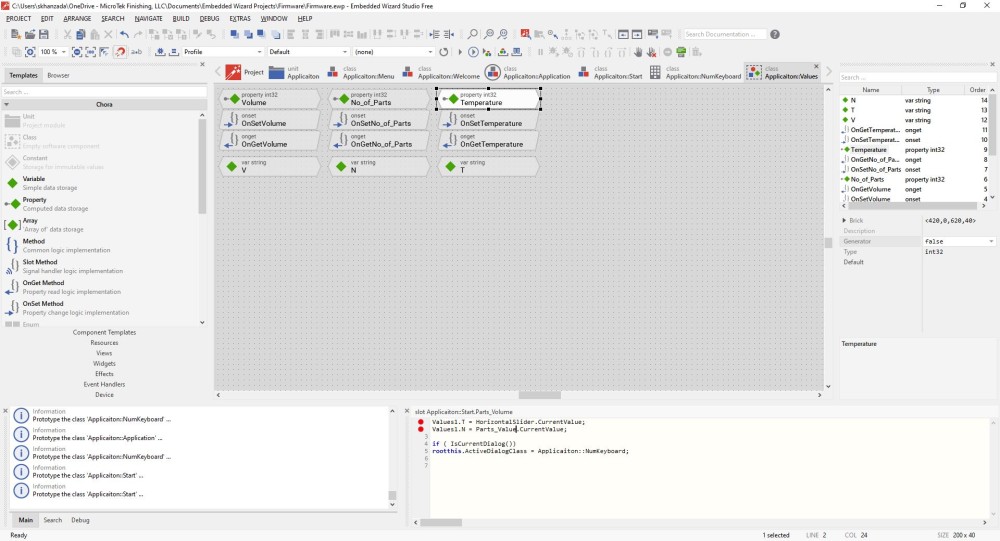
The first two images which can be seen above are the Autoobject and their properties and variables. This auto object seems to be working fine but I have another issue which will be seen shortly.
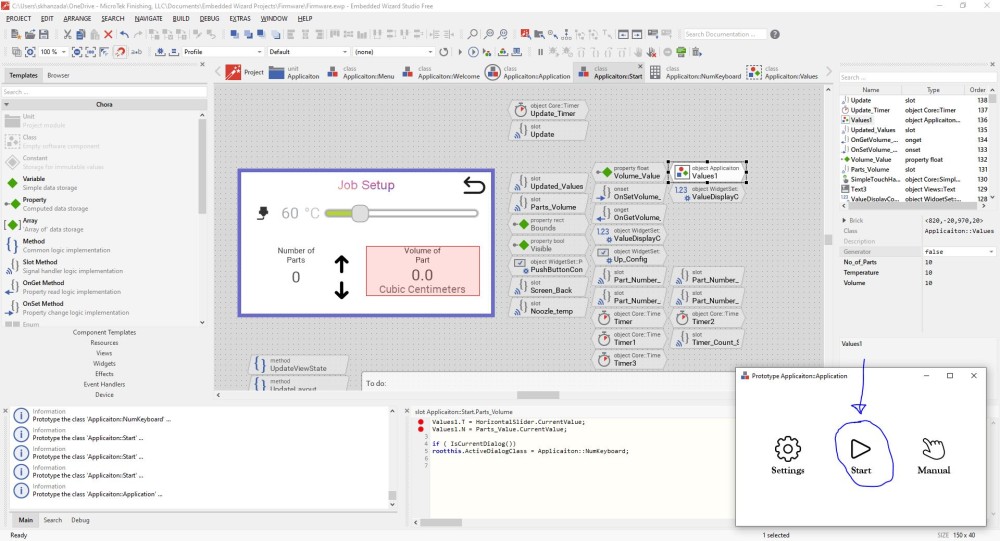

When I start the Applicaiton::Start page it automatically triggers the Nozzle_Temp Slot when there is nothing that is triggering it. No Timer or any other widget triggers it but it gets triggered somehow. It's a mystery to me.
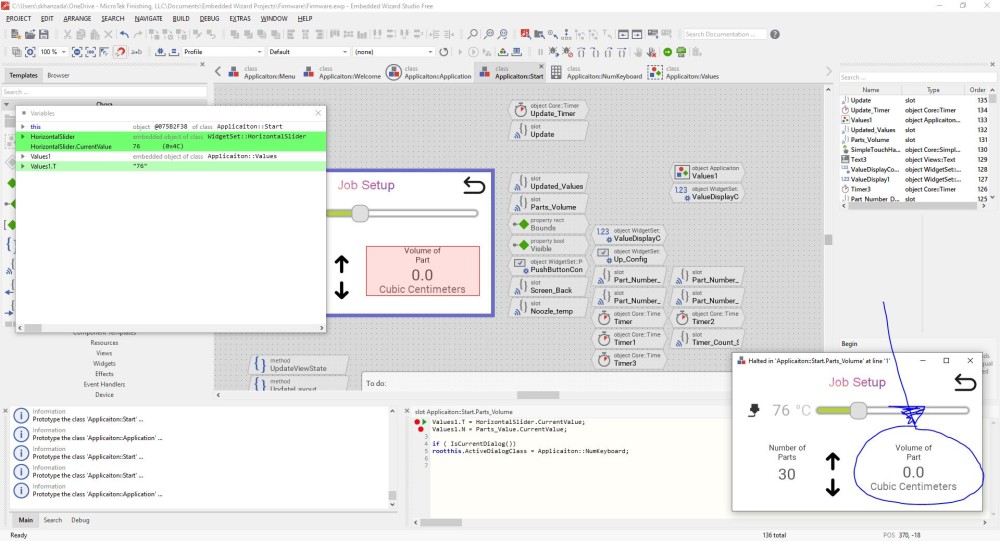
Now let's say, I click on the Volume of Part to activate a new screen to input my Volume, It saves the values for T (temperature) and N (number of parts) before moving on. At this point, the values should be saved as Strings.
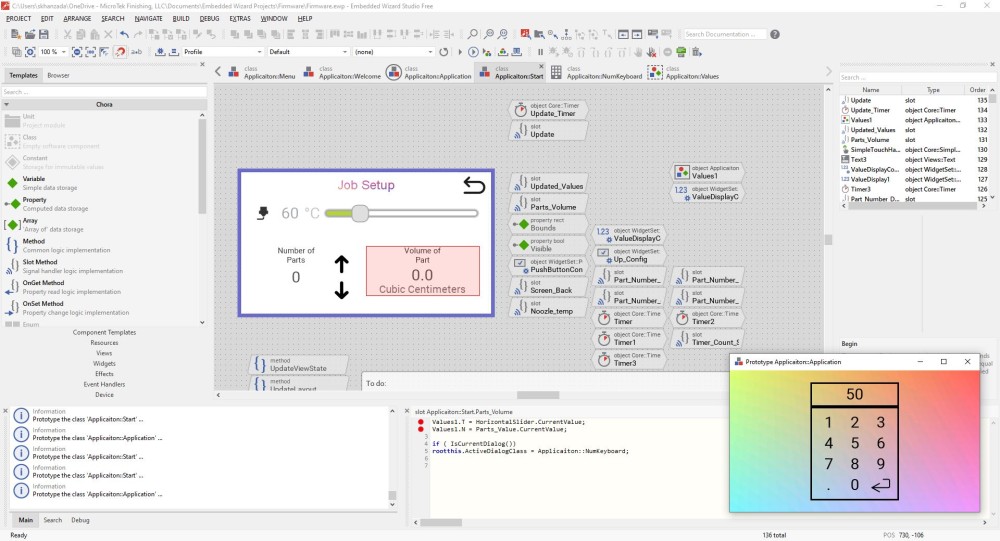
Now the new screen comes on as expected. Which is just as I intended.
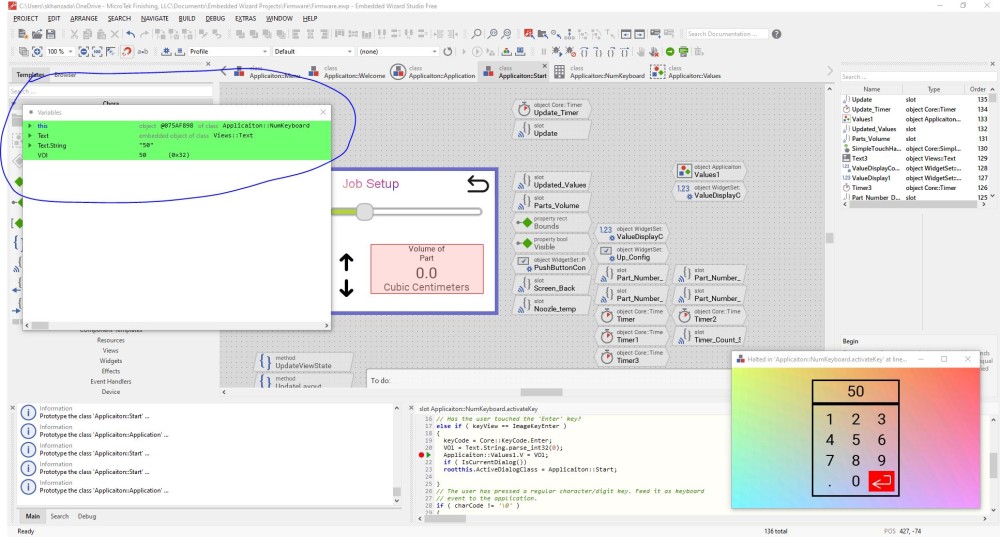
After inputting the desired value, when enter is clicked, it saves the value as the autoobject variable.
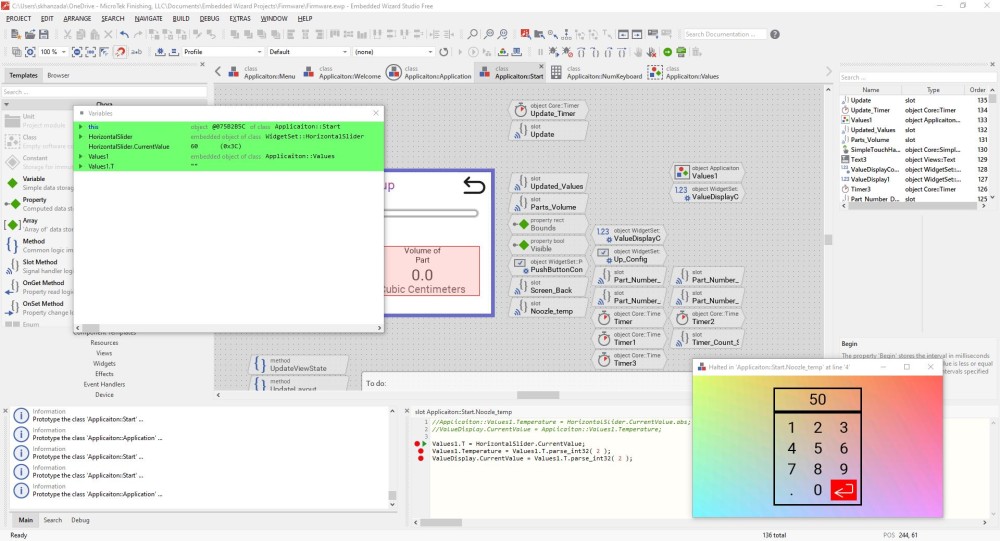
But for some reason, it either does not or loses them during page change.

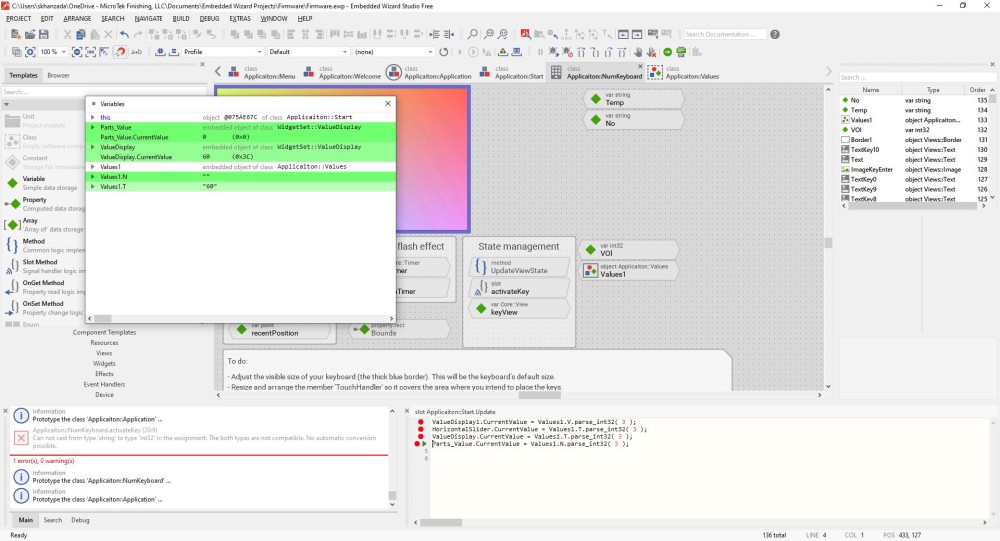
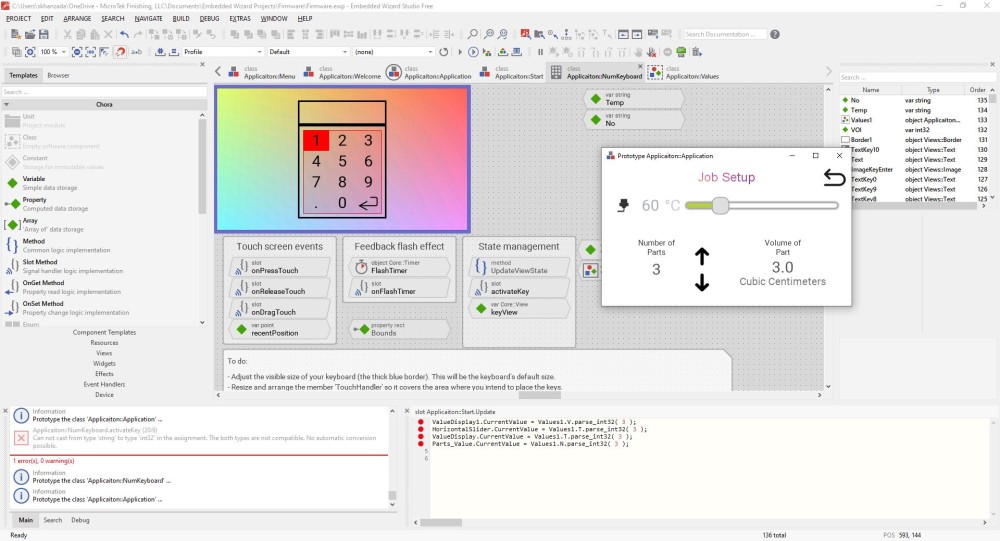
It does not save the values/strings What should I do? Any advice, tips, or tricks would help. I have tried using both properties and variables.
Thanks!